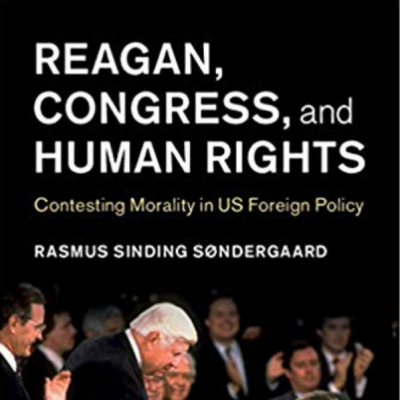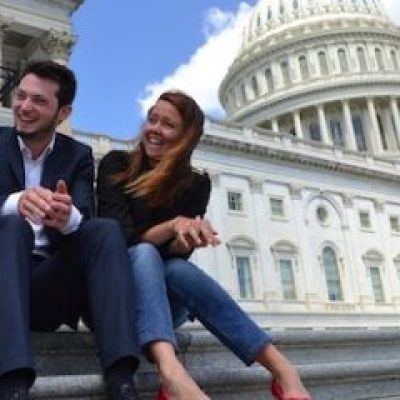Details
Article
I recently published a book that might be of interest to some of you in the Humanity in Action community. The book is profoundly shaped by my participation in Humanity in Action Fellowships and conferences over the years. I doubt that I would have written it without these experiences.
The book traces the role of human rights concerns in US foreign policy during the 1980s, focusing on the struggle among the Reagan administration and members of Congress. It demonstrates how pressure from Congress led the administration to reconsider its approach to human rights and craft a conservative human rights policy shaped by anti-communism and connected to selective attempts to promote democracy. Based on extensive archival research and interviews, the book combines a comprehensive overview of human rights in American foreign relations with in-depth case studies of how human rights shaped US foreign policy toward Soviet Jewry, South African apartheid, and Nicaragua. By tracing the motivations behind human rights activism, the book shows how liberals, moderates, and conservatives selectively invoked human rights to further their agendas. I argue that this helped cement human rights as the core moral language in US foreign policy but also further politicized the meaning of the concept with lasting impact for future US human rights policy.
In important ways, the book was conceived in the summer of 2011, when I was fortunate to participate in Humanity in Action’s Copenhagen Fellowship. When the Fellowship began, I was interested in US foreign policy and human rights issues. Yet, I knew much more about the former than the latter and I had not given much thought to combining the two topics. Our discussions during the Fellowship changed this.
A history student at the time, I had rarely encountered the topic of human rights in my studies of American history and foreign policy. This was not unusual at the time, because historians had only just begun to take an interest in human rights, which had previously been left to political scientists and legal scholars. What I did not know then was that human rights history was about to burst unto the scene as one of the fastest-growing and most dynamic subfields of historical scholarship.
In hindsight, it is now interesting – and personally significant – that this rise of human rights history in academia overlapped with my encounter with Humanity in Action. After the Copenhagen Fellowship, I participated in the international Humanity in Action conferences in Berlin (2011) and Sarajevo (2012). These were fascinating events with some incredible speakers. As a graduate student about to write my MA thesis on Bill Clinton’s foreign policy (since published as an academic article), it was thrilling to hear him address the Humanity in Action community in Sarajevo.
The experience that impacted me the most and had the greatest impact on my book, however, was the Humanity in Action-Lantos Congressional Fellowship (2012). This unique experience allowed me to work in the House Foreign Affairs Committee and gain first-hand insights into the workings of congressional foreign policymaking. This experience added the final component to the research project I would begin to work on as a Ph.D. student the following year: Congress. And more specifically: the Congressional Human Rights Caucus.
An important contribution of the book is that it brings to life often neglected Congresspersons through archival research in numerous private collections. This includes a chapter on the human rights activism of Tom Lantos (D-CA) and John Porter (R-IL) through their Congressional Human Rights Caucus (now the Tom Lantos Human Rights Commission). I am grateful to the Lantos family and the Lantos Foundation for granting me access to Tom Lantos’ private collection and to John Porter and former staffers of the committee for agreeing to talk to me.
Above all, I am grateful to Humanity in Action and all of you who make up our remarkable community. I hope many of you will read the book and maybe find it helpful as a source to understand the recent past of human rights at a time when these appear increasingly embattled.






